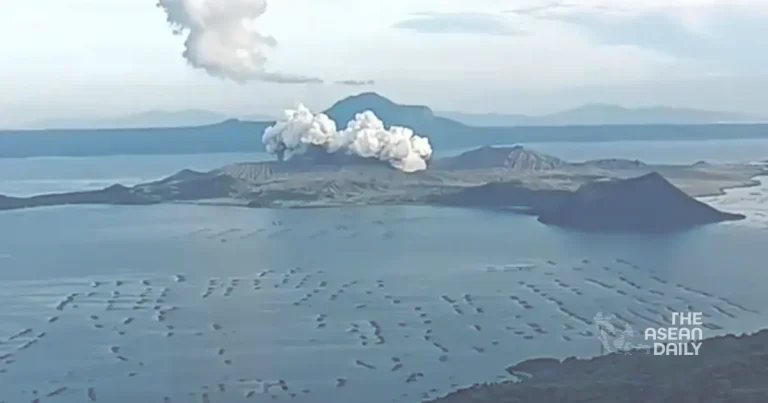2-10-2024 (MANILA) The Philippines’ volatile Taal Volcano unleashed a phreatomagmatic eruption on Wednesday afternoon, sending plumes of ash and steam soaring into the sky and rekindling memories of past volcanic unrest. The Philippine Institute of Volcanology and Seismology (PHIVOLCS) confirmed the eruption, which began at 4:21 p.m. local time, lasting for more than 10 minutes.
Toto Bacolcol, the director of PHIVOLCS, explained in an interview with Teleradyo Serbisyo that the eruption likely resulted from a shift towards a deeper part of the water, triggering the phreatomagmatic event. “This is not unprecedented,” Bacolcol stated. “Similar occurrences were observed in October and March 2022.”
The eruption, characterised by its explosive nature due to the interaction between magma and water, produced a towering ash column and base surges. Remarkably, no volcanic earthquakes were recorded prior to the event, although steam was observed rising as high as 200 metres.
Mariton Bornas, Chief of PHIVOLCS’ Volcano Monitoring and Eruption Prediction Division, drew parallels between Wednesday’s eruption and those witnessed in 2021 and 2022. “Based on seismic signals, we’ve noted similarities to the March 2022 event,” Bornas explained. “The key difference is that during 2021-2022, we observed numerous low-frequency volcanic earthquakes and continuous tremor swarms.”
Taal Volcano, nagkaroon ng pagsabog. @gmanewsbreaking @gmanews @dzbb pic.twitter.com/Mdp5ygTcH6
— peewee bacuño (@PeeweeBacuno) October 2, 2024
Despite the dramatic nature of the eruption, PHIVOLCS has maintained Taal Volcano at Alert Level 1, indicating the possibility of further gas-driven explosions, volcanic earthquakes, and minor ashfall. The institute emphasised that while weak eruptions may continue, there is no immediate cause for alarm regarding a major eruption.
“The current parameters of Taal, including seismicity, earthquake frequency, and volcanic swelling, have returned to background levels,” Bornas reassured. “This suggests it’s unlikely to escalate into a major episode of unrest comparable to the 2020 event.”
Nevertheless, authorities are not taking any chances. Residents in the vicinity of the volcano and the general public have been advised to limit their exposure to volcanic smog, or ‘vog’. Protective measures such as wearing N95 masks or gas masks and increased water intake are recommended to mitigate potential respiratory irritation.
Taal Volcano, situated approximately 50 kilometres south of Manila, has long been a source of both wonder and worry for the Philippines. Its picturesque caldera, which forms a lake, belies its potential for destruction. As a precautionary measure, entry to Taal Volcano Island remains strictly prohibited.
The eruption serves as a stark reminder of the Philippines’ position on the Pacific “Ring of Fire”, a region known for its heightened seismic and volcanic activity. This geological feature places the country at the intersection of colliding tectonic plates, making it prone to earthquakes and volcanic events.




